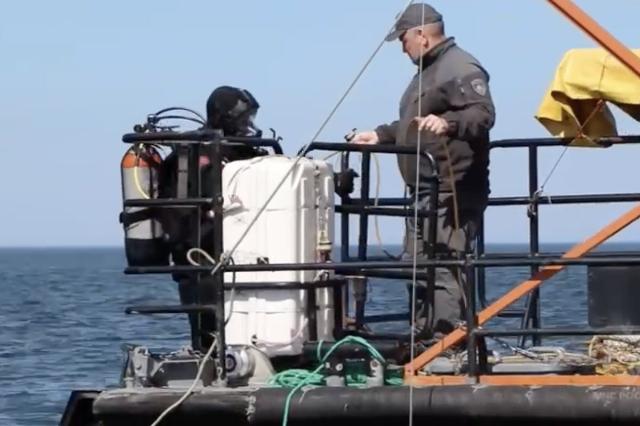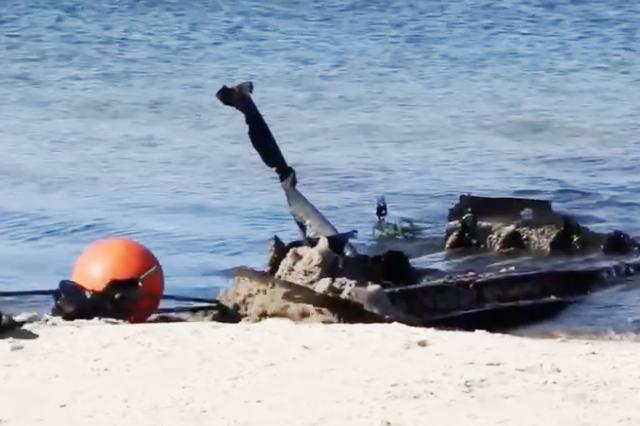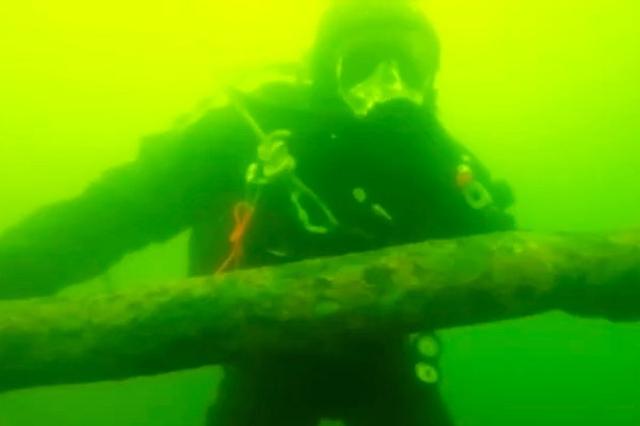The Ministry of Emergency Situations of the Russian Federation: in September, they will begin to examine the K-27 submarine, which was sunk 32 years ago
The divers of the Ministry of Emergency Situations will begin to examine the Soviet submarine K-27, resting on the bottom of the Kara Sea. This was told in the department.
K-27 is a Soviet nuclear submarine, the only ship built according to the 645 ZHMT project with liquid metal as a coolant. The boat became the winner of various awards, admirals and Heroes of the Soviet Union left its crew.
It entered service on April 1, 1962. From April 21 to June 12, 1964, she made a record autonomous voyage to the waters of the Central Atlantic. On May 24, 1968, a radiation accident occurred, the entire crew was injured, and 9 people died. On February 1, 1979, the boat was excluded from the USSR Navy and disbanded on October 1, 1980. In September 1982, she was flooded in the Kara Sea off the northeastern coast of the Novaya Zemlya archipelago at the entrance to Stepovoye Bay.
"In September, the personnel of the Leader Center of the Ministry of Emergency Situations of Russia will inspect the K-27 nuclear submarine, which was sunk in the Kara Sea," the statement said.
For the fifth time, the Ministry of Emergency Situations will take part in an expedition on the research vessel Akademik Mstislav Keldysh, the purpose of which is to survey the submarine. During the month, divers will have to work in severe weather conditions, including snow storms and low air and water temperatures. The work at depth will be carried out with the help of underwater drones "Rovbuilder-600" and "Falcon". The first one has a gamma-ray spectrometer of the Kurchatov Institute Research Center.
As stated by the head of the Ministry of Emergency Situations Alexander Kurenkov, as part of a five-year campaign to raise explosive objects, almost 126 thousand dangerous objects were identified and extracted from the bottom of reservoirs.
A submerged submarine causes serious damage to the environment and the economy
The K-27 submarine of the 645ZHMT project was withdrawn from the USSR Northern Fleet in 1980, and in 1982 it was sunk in the Kara Sea, in Stepov Bay. Its depth is currently 31 meters. The reason for the decommissioning of the submarine was the accident of the RM-1 reactors with a liquid metal coolant. As a result, the ship was irradiated, and the entire crew of 105 people suffered acute radiation sickness. Nine of them could not be saved. At the same time, back in 2012, it was reported that the ship would be lifted onto land and it would be subject to sawing. This item was included in the draft strategy for the development of the Arctic zone of Russia.
 |
| Inspection of the submerged submarine K-27. |
| Source: Frame: Telegram channel of the Ministry of Emergency Situations of Russia |
Currently, the submarine poses the greatest radiation danger to the Russian Arctic, as there are still unloaded reactors on board. If they are damaged in the area of the submarine's burial, fishing will have to be banned for a long time, which will seriously affect the economies of a number of countries. In particular, in 2021, the likely losses for the economies of Russia and Norway were estimated at $ 120 million.
At the same time, environmentalists from the Bellona Foundation called on Russia to raise submerged submarines with radioactive waste from the seabed in the Arctic. In addition to the K-27 of the 645JMT project, environmental activists are concerned about the fate of the nuclear reactor of the K-140 nuclear submarine, five reactor compartments of various submarines, as well as the screen assembly of the nuclear icebreaker Lenin. In total, today about 1 thousand objects remain at the bottom of the Arctic seas, which pose a high threat to the environment and can become sources of radioactive contamination.
 |
| Inspection of the submerged submarine K-27. |
| Source: Frame: Telegram channel of the Ministry of Emergency Situations of Russia |
What is unique about the K-27 of the 645JMT project
The Soviet submarine K-27 is the only ship built according to the 645 ZHMT project with liquid metal as a coolant. It had a number of advantages due to the use of a nuclear power plant with a LCT reactor. This means higher speed, better dynamics and, consequently, higher maneuverability.
The negative aspects of the installation's operation included the problem of the constant formation of radioactive polonium-210 and the risk of poisoning of the crew.
The crew formed by the time of the first tests of the submarine, led by Captain II rank Ivan Gulyaev, underwent a special training course at the Navy training center in Obninsk, where a test stand 27 / VT with a reactor was built.
On June 22, 1963, the Soviet Navy flag was raised on the K-27 nuclear submarine, and she went to sea for five days. Four months later, members of the government commission headed by Vice Admiral Georgy Kholostyakov signed an act on the acceptance of the "experimental nuclear submarine K-27 project 645" into operation.
In April-June 1964, K-27 made the first autonomous trip, setting a record for the duration of stay underwater — 51 days. Her commander, already a captain of the first rank, Ivan Gulyaev, was awarded the title Hero of the Soviet Union, and other crew members received awards for that campaign and the development of new equipment.

